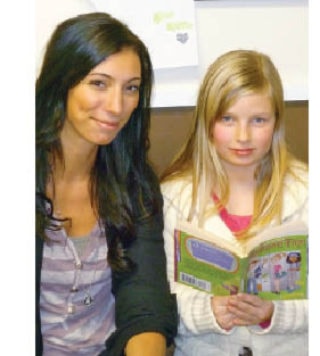No matter how many video games, television shows, and iPod gadgets are introduced to our youth, one thing will always remain the same. Children love stories. There is nothing that hushes a rambunctious class of elementary students quicker than sharing with them a good story.
Children have the ability to let go of the world around them and allow theirs selves to be completely absorbed into a story. So how can parents, teachers, and advocates of literature make the most of these magical moments? How can we make story time most effective for children’s literacy development?
Well, there are many ways, but here’s a couple reading techniques that are fun and easy to implement. Story time can be broken down into three parts.
Pre-Reading: This is a great way to get children engaged in a particular book before actually reading it.
Make observations. View the title page and discuss different elements of the book. (author, illustrator, images, etc.)
A picture tells a thousand words. Glance through the book’s illustrations and make predictions about what the story may be about.
Before having a child read aloud, encourage them to glance through the text and ask for assistance with difficult words and sounds. This will give children a greater sense of confidence and preparedness.
Reading: Reading aloud can often stimulate anxiety for many children. Ensure that the environment is a safe place for them to confront their challenges and grow.
Check for comprehension. Stop a couple times throughout the book and discuss the main idea, characters, etc.
If necessary, encourage children to use a finger to help guide their reading. This will help them to focus on accuracy rather than speed.
Let children enjoy being the listener too. It is important for children to practice both reading out loud and listening to others read.
Expand vocabulary. Take the time to discuss the meanings of different words in the book.
Be dramatic! Don’t be afraid to get into a story’s characters. Lead by example.
Post-Reading: This is a good opportunity to assess a child’s general interest towards reading.
Ask for feedback. Do they like or dislike the story? This will help to determine a child’s favorite genre of books.
Create a new ending. Have children write or verbalize a new ending to the original story.
Make connections to text. Ask children if they have a similar story or personal connection from their own experiences.
Implementing a couple of these techniques into daily reading will most definitely improve literacy skills. Be creative!
Jenny Inglis is a certified teacher and owner/operator of Inglis Professional Tutoring. She can be reached at 250-650-3327 and www.comoxvalleytutoring.com.
